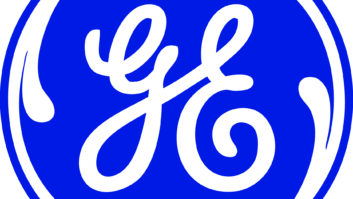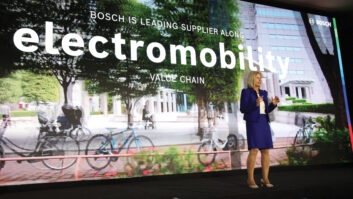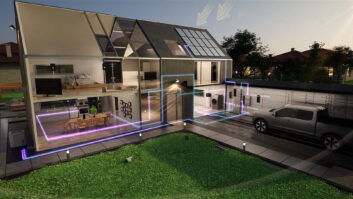PALO ALTO, CALIF. — Electric car disrupter Tesla Motors formally announced its foray into the home power business, launching Tesla Energy to provide high-capacity installed batteries to store solar-generated power for later use.
The first product is the Powerwall, a rechargeable lithium-ion battery designed to store energy at a residential level for load shifting, backup power and selfconsumption of solar-power generation. The Powerwall consists of Tesla’s lithium-ion battery pack, liquid thermal- control system and software that receives dispatch commands from a solar inverter.
The unit mounts on a wall and is integrated with the local grid to harness excess power and give customers the flexibility to draw energy from their own reserve.
The Powerwall provides for a number of efficiencies to power a household or business:
• The battery can provide financial savings to its owner by load shifting, that is charging during low-rate periods when demand for electricity is lower and discharging during more expensive rate periods when electricity demand is higher.
• It can store surplus solar energy not used at the time it is generated, and use that energy later when the sun is not shining.
• It can be used as a backup power supply in the event of a power outage.
• And, of course, it can be used to charge an owner’s Tesla electric vehicle, or any other electric vehicle.
The Powerwall is available in 10 kilowatt hours (kWh), optimized for backup applications, or 7kWh, optimized for daily use applications. Both can be connected with solar or the grid and both can provide backup power. The 10kWh Powerwall is optimized to provide backup when the grid goes down. When paired with solar power, the 7kWh Powerwall can be used in daily cycling to extend the environmental and cost benefits of solar into the night when sunlight is unavailable.
The Powerwall is intended to be professionally installed; Tesla’s selling price to installers is $3,500 for 10kWh and $3,000 for 7kWh. Deliveries begin in late summer.
“Once we’re able to rely on renewable energy sources for our power consumption, the top 50 percent of the dirtiest power-generation resources could retire early. We would have a cleaner, smaller and more resilient energy grid,” the company said in a statement.
Tesla also announced a series of partners that will help market the Powerwall or incorporate the product into their energy strategies. Some of them include:
• TreeHouse, a sustainable home improvement store, is collaborating with Tesla to sell the Powerwall home battery. “I think in the near future, having a battery in your home will be as normal as having a water heater or a dishwasher,” said TreeHouse co-founder and president Jason Ballard.
• SolarEdge, a leader in the global PV inverter market, and Tesla partnered for the joint development of a PV storage and backup power solution for the worldwide residential solar market. Building on SolarEdge’s proven DC optimized inverter proven and Tesla’s leading automotivegrade battery technology, the solution will require only a single SolarEdge inverter to manage both PV and storage functions. The system is designed for efficient, outdoor installation and includes remote monitoring and troubleshooting to keep operations and maintenance costs low.
• Amazon will roll out a 4.8-megawatt hour pilot of Tesla’s energy storage batteries in the U.S. West (Northern California) region of its Amazon Web Services business.
• Target, will also pilot a test at select stores to incorporate Tesla Energy storage as part of its energy strategy. “Tesla’s cutting-edge technology offers unique benefits to powering these stores, most importantly relieving stress from the electrical grid at peak times, furthering Target’s investment in designing and operating energy-efficient and sustainable buildings,” said David Hughes, senior group manager, energy management.













